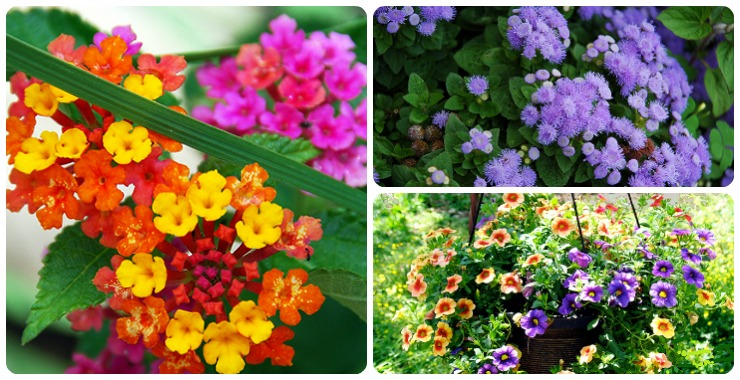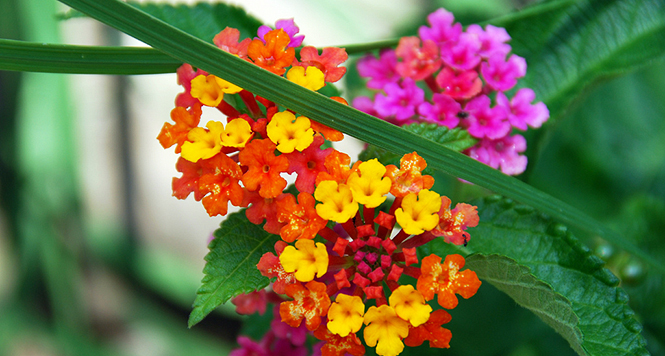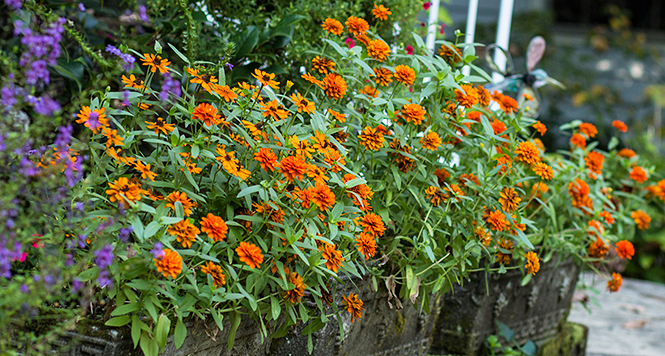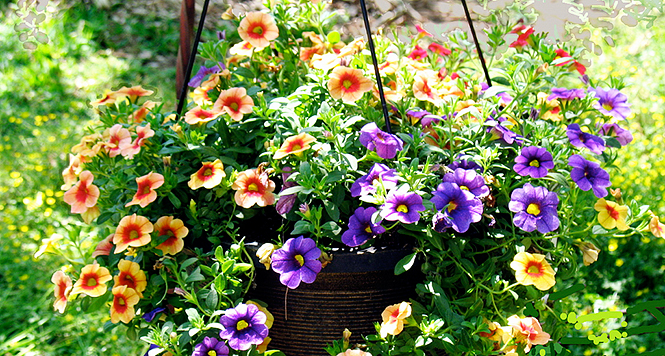Make A Gorgeous Garden That Blooms All Year-Round

Do you want a garden which is constantly filled with flowers? With a right combination of plants you can achieve just that – a garden that lives and fascinates everybody all year round. We will reveal you the secret of how to turn your garden into a dazzling floral oasis 🙂
Scaevola

Scaevola is a Mediterranean plant that is easy to nourish and in sunny and half-shaded areas. Blossom from mid-April to late fall, in white, purple and blue. There are two main forms – semi-drooping that falls gently over pots and hanging with long branches that fall through the pots and descend slightly below it.
Scaevola can be planted in hanging baskets or large garden pots. In the open flower beds it is best to plant it at distances of about 40 centimeters, and on the ground should be required to add five liters of peat per square meter. It is best grown on
temperatures from 20 to 30 degrees Celsius, although it is tolerant to night temperatures dropping to 13 degrees Celsius.
Lantana

Lantana is a shrub-like plant native to Latin America, where it is growing wild in tropical forests. Identified by glossy, dark green leaves and a multitude of flower buds. In the greenhouse, it blooms throughout the year, and on open ground from spring until the first frosts.
What makes it special is the Lantana color change of the flowers during growth. On the shrub there can be more flowers in various colors – yellow, pink, white and purple. After flowering, a cluster of berries – fruits remains, like blackberries containing the seed of lantana.
Angelonia

Angelonia is beautiful, elegant and very resistant plant that originates from Mexico. Blossom from late May to October. There are a multitude of flowers, delicate purple or white, who can survive at winter from 5 to 12 degrees Celsius.
Angelonia do not mind the rain and high summer temperatures. It likes sunny and well-drained soil the most. The only thing I can not stand, is the constant moisture. Therefore, it should be watered only when the soil dries. It is planted in pots – alone or in combination with petunias or verbena.
Zinnia

Zinnia is another flowering plant that can be easily cultivated. It is planted in flower gardens, used in arrangements as cut flower. It is very durable, both in the garden and in the vase.
There are tall and dwarf types of zinnia. It is sown directly into the garden in the second half of April. Tall varieties are planted at intervals of 30-40 centimeters. It likes sunny places and is not too demanding – it can grow on poor, but well drained soil. Begins to bloom early, at the beginning of June until the first frosts. Blooms in yellow, pink, red, apricot color, coral and ivory.
Ageratum

Ageratum comes from Latin America – Peru and Mexico. It occurs in tall and short varieties. Short species grow up to 20 cm in height and is ideal for garden edges, and curbs. They look great if you plant them in rocky areas or next to the paths in the garden. Tall species grow up to 70 cm in height and are grown for purposes of horticulture, where they are used as a cut flower.
Ageratum blossom in different colors: blue, pink, purple, white, and from May to the first frosts. It likes a sunny place, but grows well and in half-shade. Seeking a light, permeable ground and regular fertilization. It tolerates a lot of water and often watering, as well as strong winds and drafts.
Calibrachoa

Calibrachoa blooms in yellow, white, pink, purple and blue during the summer, until late fall. Fast-growing and easy to maintain, regardless of weather conditions. Each day opens new little flowers. With the bell flower, it reminiscent of Petunia, but belongs to an entirely different genus.
Calibrachoa grows well in sunny and half shaded areas. It likes frequent watering, but do not leave their roots in water constantly. When sawn, it does not need supplemental feeding is three to four weeks, and once in seven days afterwards. If the leaves are yellow, it indicates a lack of iron and nutrients. It is planted in pots and, thanks to the beautiful flowers, often can be seen on the balconies.

Comments are closed.